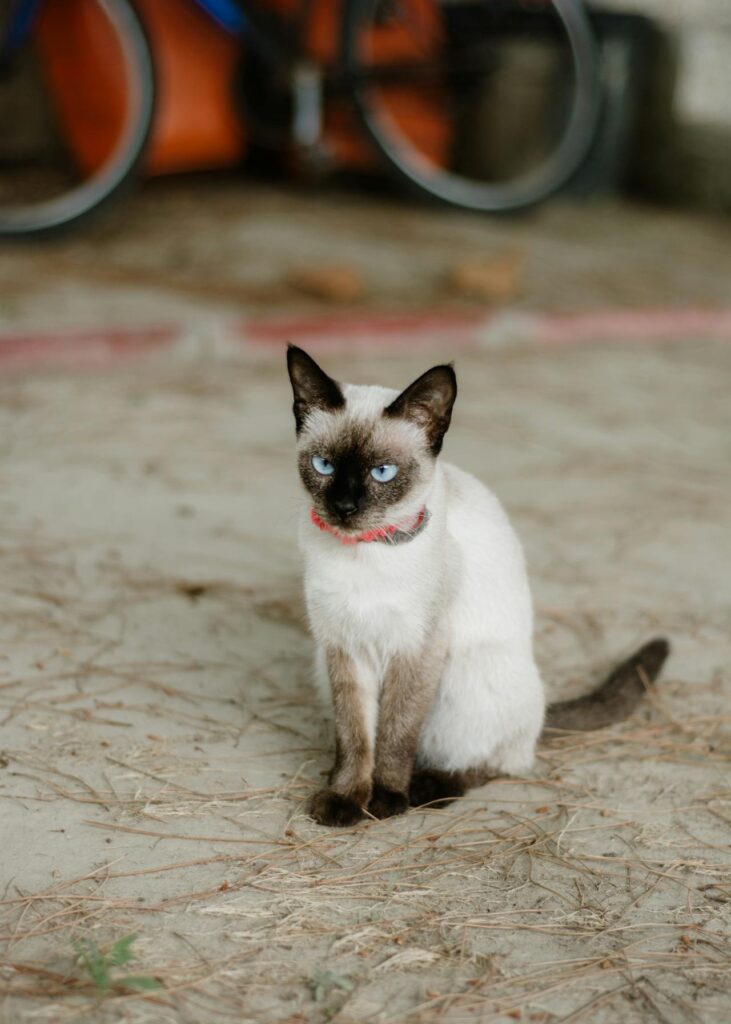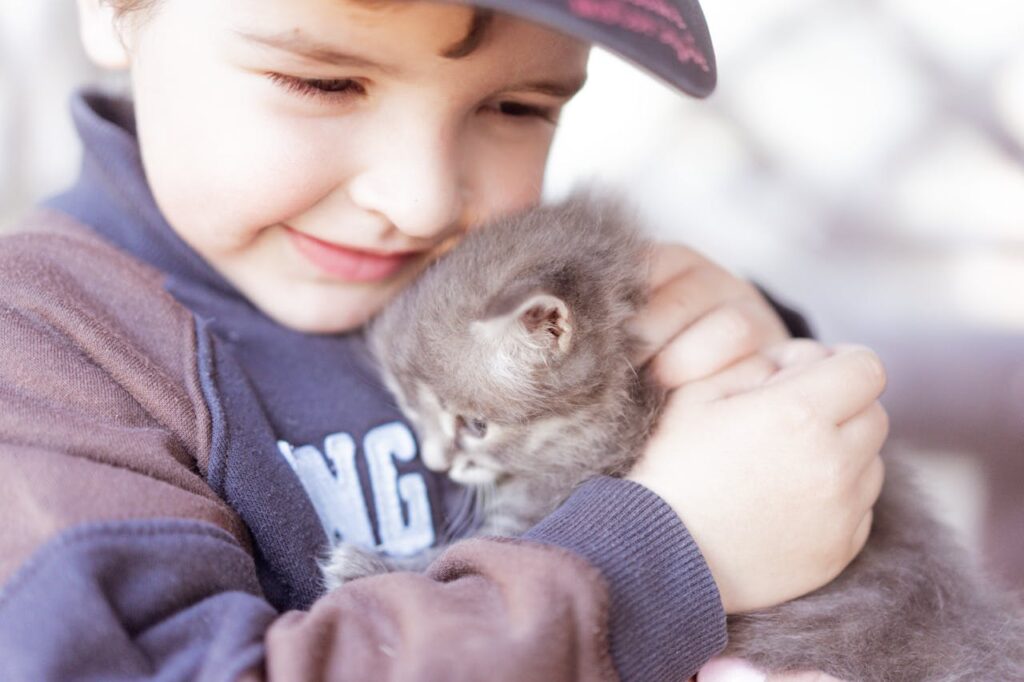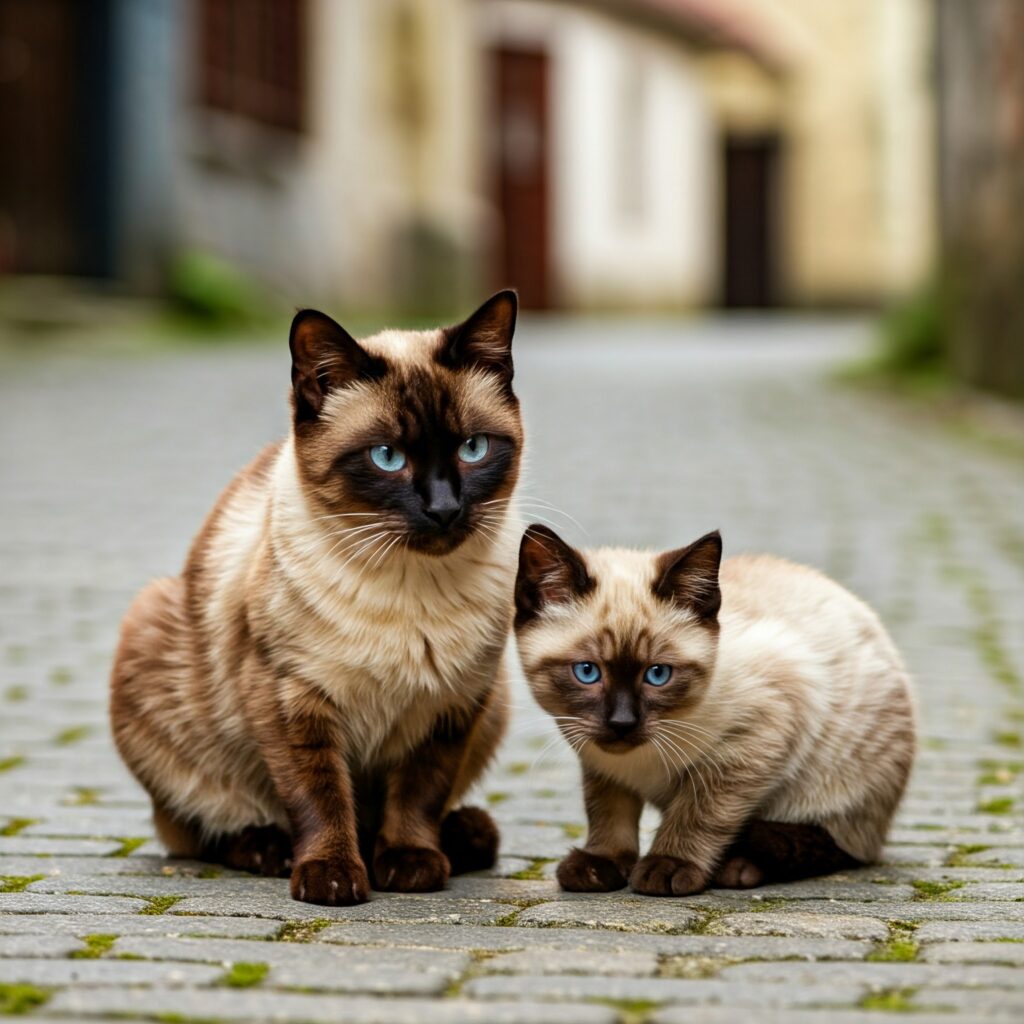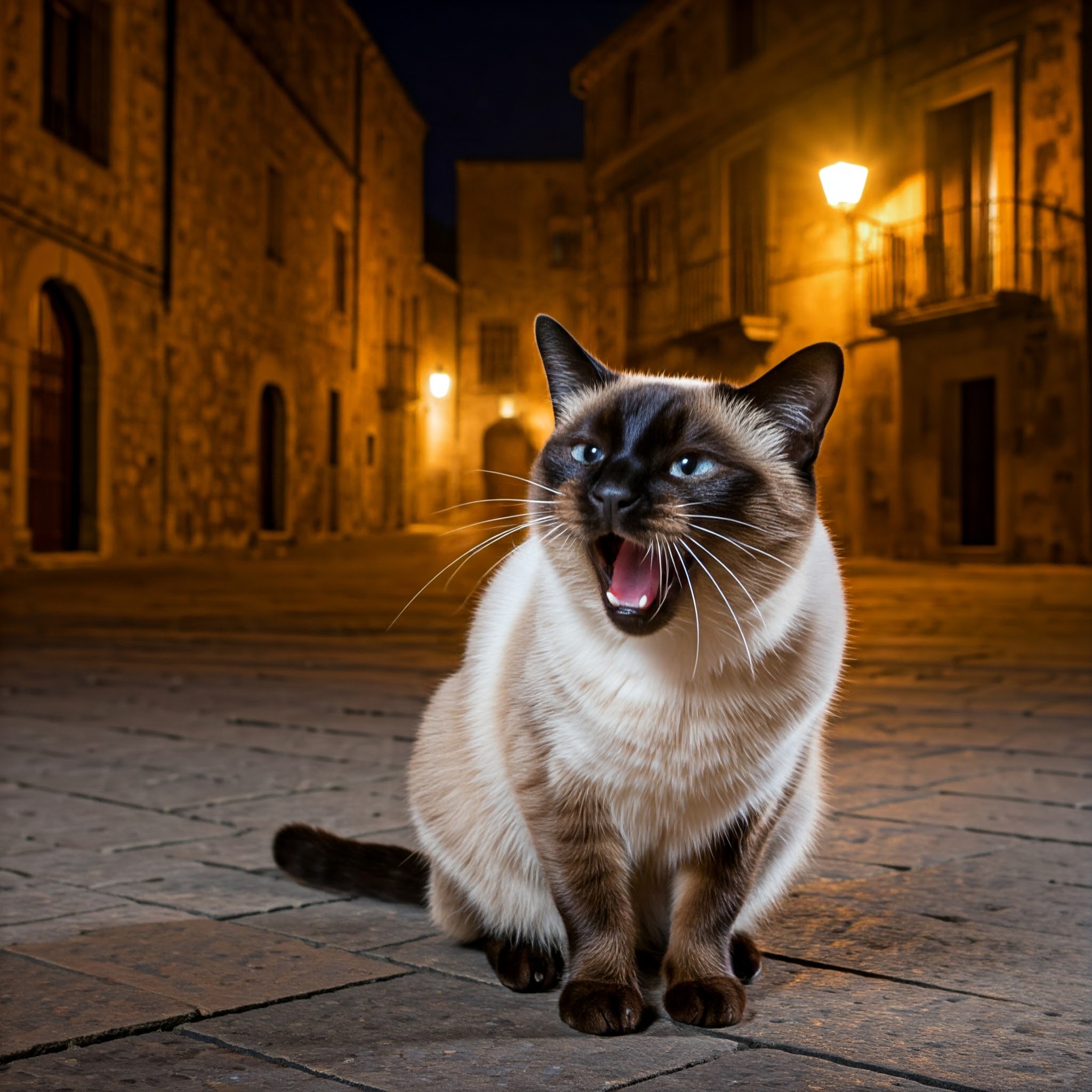Siamese cats have long been one of the most iconic and recognized cat breeds in the world, but their reputation is often shrouded in myths. Chief among these misconceptions is the idea that Siamese cats are mean. While their assertive personalities and vocal tendencies can sometimes be misunderstood, labeling them as inherently mean does a disservice to their affectionate and intelligent nature. By examining their behaviors, genetics, and environmental needs, we can better understand why these cats are misunderstood and how to foster positive relationships with them. It is important to note that these behaviors are not inherent to the cat breed itself, but rather influenced by factors such as socialization and exercise.
Understanding the Siamese Cat’s Unique Personality
Beneath the Misconceptions
At the heart of the “Siamese cats mean” stereotype lies a highly affectionate and intelligent breed second cat. Siamese cats are known for their social nature, strong bonds with their owners, and a playful, curious disposition. However, their emotional depth also means they can be sensitive and require patience. When their behaviors are misinterpreted, they can come across as domineering or aggressive.
Siamese cats are particularly social animals. So are siamese cats mean? Unlike some cat breeds that enjoy solitude, Siamese cats thrive on interaction and companionship. This need for attention can manifest in persistent vocalizations or what might be seen as “demanding” behavior. Compared to other cats, Siamese cats often display more affectionate and dominant behaviors, especially in multi-cat households. Understanding these traits as expressions of their emotional needs rather than signs of hostility is key to appreciating their true nature.

Table of Contents
Understanding Siamese Cat Behavior
The Role of Genetics in Temperament
Genetics play a significant role in shaping the behavior of Siamese cats, as highlighted by research studies and scholarly articles in the field of feline medicine. Through selective breeding, these cats have developed distinctive personality traits throughout, including high intelligence and a strong desire for social interaction. While these genetic predispositions contribute to their engaging personalities, they also make Siamese cats more reactive to their environment.
How Intelligence Influences Behavior
Siamese cats mean? For starters they are exceptionally intelligent, a trait that is both a blessing and a challenge. Siamese cats tend to exhibit aggressive behaviors due to their high energy levels and strong personalities, which can be misinterpreted as mean behavior. Their intelligence makes them quick learners and problem solvers, but it can also lead to frustration if their needs for mental stimulation and engagement are not met. This frustration may be misinterpreted as mean behavior when, in reality, the cat is seeking ways to channel its mental energy.
Why Siamese Cats Mean Is Silly. They Are More Vocal Than Other Breeds
One of the most distinguishing features of Siamese cats is their vocal nature. Their deep, loud meows are a form of communication used to express needs, seek attention, or signal displeasure. This talkative behavior can sometimes be mistaken for aggression, especially by those unfamiliar with the siamese breed.

Common Signs of “Mean” Behavior
Hissing and Swatting: What It Really Means
Siamese cats aggressive behavior is often a topic of concern. Hissing and swatting are often defensive reactions. For Siamese cats mean is confusing because these behaviors typically occur when they feel threatened, overstimulated, or scared. Instead of asking, are siamese cats mean, rather than viewing these actions as signs of innate aggression, it’s important to consider the context and address the underlying cause.
Biting or Scratching: Playful or Aggressive?
Siamese cats are playful by nature, and their biting or scratching may be part of their interactive play style. However, if these behaviors become frequent or intense, they could indicate frustration separation anxiety or overstimulation. Recognizing the difference between play and genuine distress is essential for managing these actions.
Avoiding Contact or Hiding: Signs of Fear or Stress
A Siamese cat that withdraws from interaction or hides frequently may be experiencing stress or fear. These behaviors are not indicative of the cat shows a “siamese cats mean” temperament but rather a signal that the cat needs space or feels overwhelmed by its environment.
Excessive Vocalization: Frustration or a Call for Attention
Continuous meowing is another behavior often misunderstood. While some may see it as annoying or demanding, this vocalization is typically a Siamese cat’s way of expressing unmet needs or seeking engagement. Addressing the root cause, whether it’s hunger, loneliness, or discomfort, can help reduce excessive meowing.

Factors Contributing to Behavior Issues
Proper socialization during kitten-hood is critical for any cat’s development, and Siamese cats are no exception. Cats that lack exposure to people, sounds, and routines in their early months may grow up to be more fearful or reactive. Ensuring a well-rounded socialization process helps prevent behavior issues later in life. Providing a cat tree as a safe space for Siamese cats to retreat when feeling stressed or overwhelmed is also important in managing their emotional well-being and behavior.
Environmental Stressors
Are Siamese cats mean is false as they are particularly sensitive to changes in their environment. New pets, frequent visitors, loud noises, or even minor shifts in routine or stimulating environment can stress them, leading to withdrawn or reactive behaviors. Proper socialization with other pets is essential for shaping a friendly personality and preventing potential aggression. Creating a stable and predictable home environment can mitigate these stressors.
Health Issues That May Manifest as Aggression
Unaddressed health problems, such as dental pain, arthritis, or gastrointestinal issues, can cause a normally affectionate Siamese cat to act out. If behavioral changes occur suddenly, it’s essential to consult a veterinarian to rule out underlying medical conditions.
The Sensitive Side of Siamese Cats
Loyal to a Fault
Siamese cats, known for their striking blue eyes, often form deep bonds with one person, which can lead to possessive behaviors. This intense loyalty is a testament to their sensitive and emotional nature. Understanding and nurturing this bond can strengthen your relationship with your cat.
Emotional Sensitivity
Siamese cats are highly attuned to the emotions of their owners. They may respond to stress or sadness by becoming clingy, aloof, or even more vocal. Recognizing this emotional sensitivity allows owners to provide the comfort and reassurance these cats need.
Assertiveness Versus Meanness
The assertiveness often displayed by Siamese cats can be misinterpreted as meanness. In reality, this behavior reflects their strong desire to communicate and assert their needs. Learning to read their body language and vocal cues can help dispel misunderstandings.

Debunking the Myths
Are Siamese Cats Really More Aggressive? Understanding the Myth of Siamese Cats Aggressive Behavior
Contrary to popular belief, Siamese cats, a breed of domestic cat, are not inherently more aggressive than other breeds. Studies exploring the relationships between various behavioral traits and domestic cat breeds indicate that their expressive nature and strong personalities may make their actions more noticeable, but these behaviors are typically situational rather than innate.
Separating Fact From Fiction
The myth of “Siamese cats mean” likely stems from a misunderstanding of their behaviors. These cats are complex creatures that combine affection, intelligence, and emotional depth. Addressing their needs and understanding their communication style can reveal a loving and devoted companion.
How to Foster Positive Behavior
Building Trust
Consistency in daily routines and interactions builds trust between a Siamese cat and its owner. Predictable engagement and positive reinforcement foster a secure and harmonious relationship. The Cat Fanciers’ Association (CFA) recognizes specific coloration patterns and sets standards for coat patterns for Siamese cats, which are important for show eligibility and breeding practices.
Keeping Your Siamese Cat’s Mind Sharp and Happy
Think of your Siamese cat as that super-smart kid in class who finishes their work early and starts causing mischief out of boredom. These cats aren’t just looking for a simple toy mouse to bat around – they need serious mental workouts to stay happy and balanced.
Interactive play is absolutely crucial. Grab those wand toys, laser pointers, or even teach them to play fetch (yes, really!). But here’s the key: mix it up. Your clever Siamese will get bored with the same old routine faster than you can say “where’s my favorite slipper?”
Puzzle feeders are like catnip for their active minds. Start with simple treat balls and work your way up to more complex puzzles. You’ll be amazed at how quickly they figure them out. Many Siamese cats can even learn to solve multi-step puzzles to get their rewards.
Set aside dedicated playtime each day – think of it as your cat’s gym and brain training session rolled into one. Hide treats around the house, create obstacle courses, or try clicker training. These activities aren’t just fun – they’re essential for preventing destructive behaviors that can pop up when these intelligent cats get bored.
Remember, a mentally stimulated Siamese is a well-behaved, happy Siamese!
Setting Boundaries Without Punishment
Effective behavior management involves redirection and positive reinforcement rather than punishment. Harsh corrections can damage trust and exacerbate negative behaviors. Instead, reward desired actions and provide alternative outlets for undesirable ones.
Creating the Ideal Environment

The Importance of Routine: Creating Your Cat’s Perfect Day
Think of your Siamese cat as the ultimate creature of habit – they’re basically furry scheduling experts! While we might enjoy spontaneity, your Siamese thrives on knowing exactly what’s coming next. It’s like they have an internal clock that puts Swiss watches to shame.
A well-structured day for your Siamese might look like this:
Morning cuddles and breakfast at sunrise
Mid-morning play session when they’re most active
Afternoon window-watching during bird peak hours
Evening interactive playtime before dinner
Nighttime snuggles before bed
When you stick to a routine, you’ll notice your Siamese becoming more relaxed and confident. They’ll stop those 3 AM wake-up concerts (well, mostly) and settle into a rhythm that works for both of you.
Managing the Multi-Cat Dynasty
Living with multiple cats is like running a tiny furry kingdom, and your Siamese might fancy themselves as the royal heir! Here’s how to keep the peace: The International Cat Association (TICA) recognizes both traditional and modern Siamese styles, highlighting their own unique personality characteristics and the evolution of these styles due to selective breeding practices.

Resource Management 101:
One litter box per cat, plus an extra for good measure
Food stations in different rooms to prevent mealtime showdowns
Multiple water sources throughout the house
Several scratching posts in prime locations
Cozy beds scattered throughout different territories
Think of your home as cat real estate – everyone needs their own prime property!
Strategic Space Planning:
Create vertical spaces using cat trees and wall shelves
Set up “highways” so cats can move around without confrontation
Design multiple entry and exit points in popular rooms
Establish neutral zones for shared activities
Creating the Perfect Safe Haven

Your Siamese needs their own private retreat – think of it as their personal spa getaway. This isn’t just about having a hiding spot; it’s about creating a space where they can fully decompress.
Elements of the Perfect Safe Space:
A quiet corner away from household traffic
Soft, cozy bedding that smells like them
A view of their territory (window access is ideal)
Easy escape routes
Familiar toys or comfort objects
Location Matters:
Choose elevated spots for security
Consider room corners for a defensive position
Keep it away from noisy appliances
Ensure it’s not in high-traffic areas
Remember, a safe space isn’t just for hiding – it’s where your Siamese goes to recharge their social batteries. Even these chatty, people-loving cats need their alone time!
By implementing these expanded strategies, you’re not just creating a home for your Siamese – you’re building their ideal environment where they can truly thrive. The key is understanding that these aren’t just nice-to-have additions; they’re essential elements for your cat’s emotional and physical well-being.
Conclusion
The Wonderful World of Siamese Magic
Let’s get one thing straight – calling Siamese cats “mean” is like calling a unicorn “just a horse.” These blue-eyed charmers, whether traditional Siamese with their distinct physical traits or the more recent, elongated modern variants, are walking, purring contradictions wrapped in silky fur! They’re the drama queens of the cat world who somehow manage to be both totally sophisticated and utterly goofy at the same time.
Cracking the Siamese Code: Insights from the Cat Fanciers Association
Think of your Siamese as that friend who communicates entirely in inside jokes and meaningful looks. They’re not being difficult; they’re just speaking their own special language! One minute they’re giving you a philosophical lecture about their empty food bowl, the next they’re doing acrobatics off your coffee table just to make you laugh.
A Love Story Like No Other
Having a Siamese cat is like starring in your own romantic comedy – there’s drama, there’s laughter, and yes, there’s plenty of love. These cats don’t just live with you; they become part of your daily story. They’ll help you with everything (whether you want it or not), comment on your life choices (loudly), and shower you with more affection than you thought possible from a creature who still acts offended when you buy the wrong brand of cat food.
Remember, you’re not just getting a pet – you’re getting a furry life coach, entertainment system, and best friend all in one stunning package!





Pingback: Are Siamese Cats Friendly? Lets find out the exciting truth!